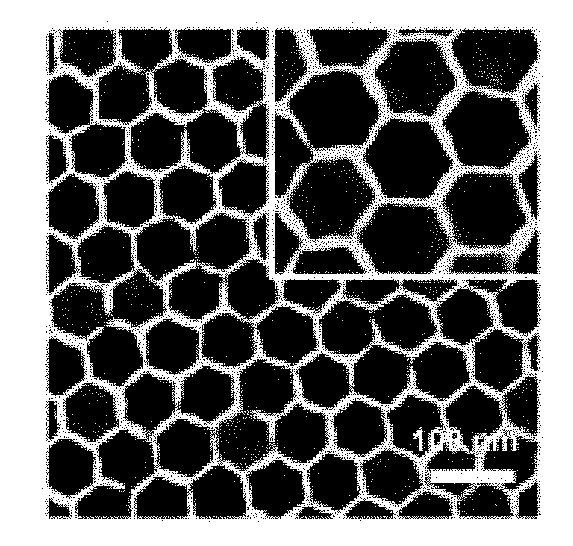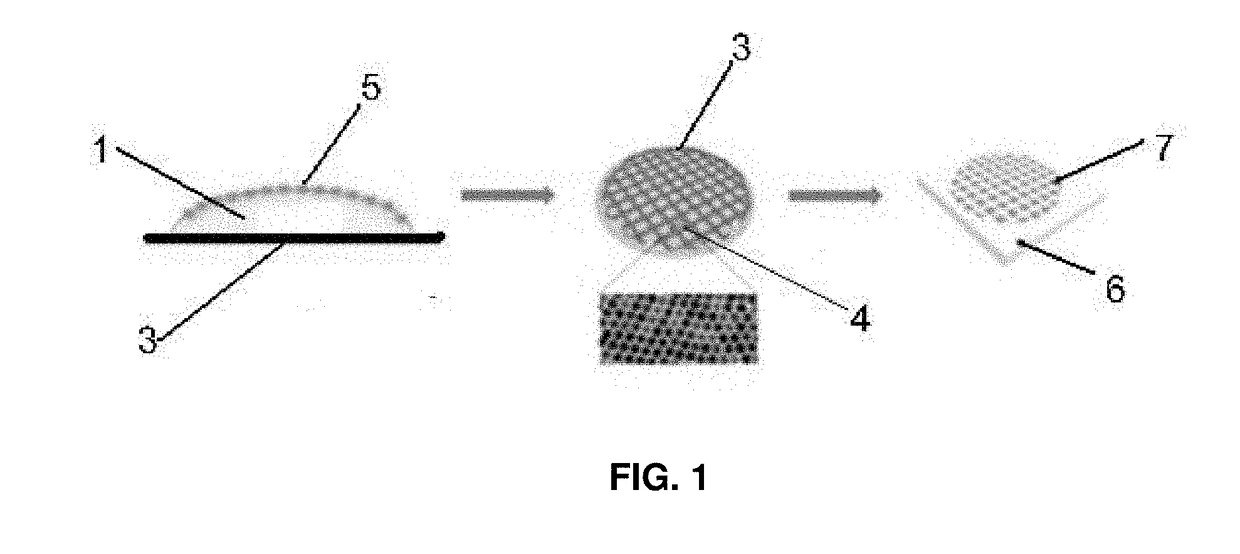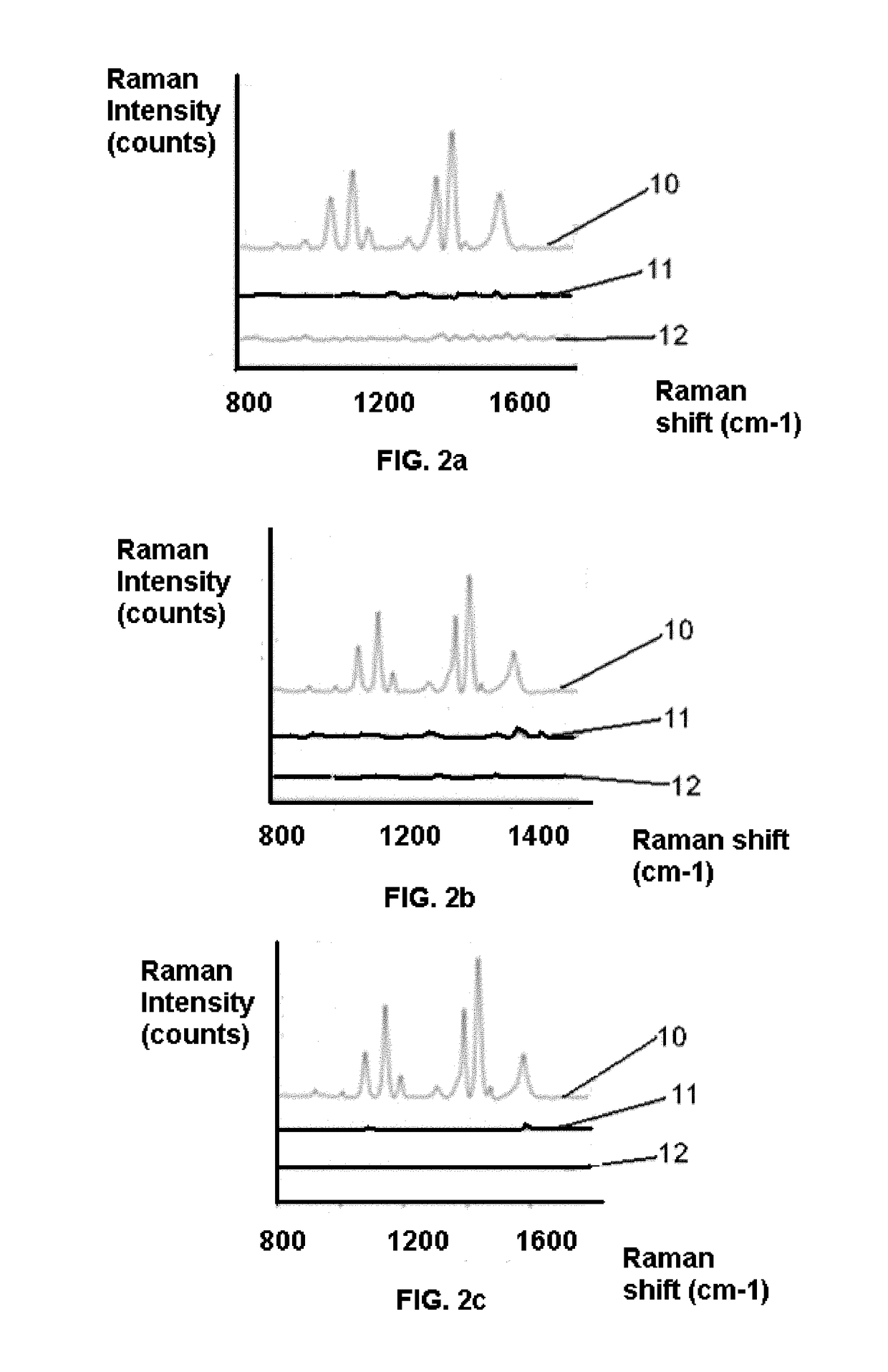Plasmene nanosheets & methods of synthesis thereof
a technology of plasmene nanosheets and nanoparticles, which is applied in the field of plasmonic nanoparticles based on surface-enhanced raman scattering (sers) substrates, can solve the problems of limited flexibility of substrates, sers applications, and field applications utilizing optical properties based on localized surface plasmon resonance (lspr) that have been scarce, and achieves easy decryption, improved flexibility and convenience. , th
- Summary
- Abstract
- Description
- Claims
- Application Information
AI Technical Summary
Benefits of technology
Problems solved by technology
Method used
Image
Examples
Embodiment Construction
[0084]A combination of polymer-ligand-based strategy and drying-mediated air-water interfacial self-assembly was utilized for fabrication of plasmene nanosheets with Au@Ag nanocubes (NCs) as model building blocks.
[0085]The physical steps towards obtaining a free-standing plasmene nanosheet are demonstrated in FIG. 1. In brief, a concentrated drop of polystyrene (PS)-capped NCs is spread and allowed to solidify into a monolayered film with silver-like reflection on the surface of a water droplet. Subsequent slow evaporation resulted in plasmene nanosheets which covered almost the whole grid.
[0086]One striking feature of the plasmene nanosheets is their high mechanical flexibility, which allows for a high-fidelity polydimethylsiloxane (PDMS) elastomer-mediated transfer capability, enabling them to serve as powerful “SERS adhesive” for chemical identification of trace amount of chemicals on solids of different materials with complex surface structures.
[0087]To prove this capability, 4-...
PUM
| Property | Measurement | Unit |
|---|---|---|
| thickness | aaaaa | aaaaa |
| thickness | aaaaa | aaaaa |
| excitation wavelengths | aaaaa | aaaaa |
Abstract
Description
Claims
Application Information
 Login to View More
Login to View More - R&D
- Intellectual Property
- Life Sciences
- Materials
- Tech Scout
- Unparalleled Data Quality
- Higher Quality Content
- 60% Fewer Hallucinations
Browse by: Latest US Patents, China's latest patents, Technical Efficacy Thesaurus, Application Domain, Technology Topic, Popular Technical Reports.
© 2025 PatSnap. All rights reserved.Legal|Privacy policy|Modern Slavery Act Transparency Statement|Sitemap|About US| Contact US: help@patsnap.com



